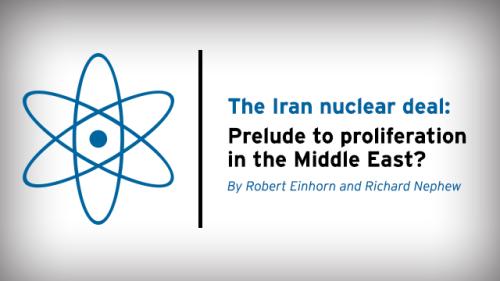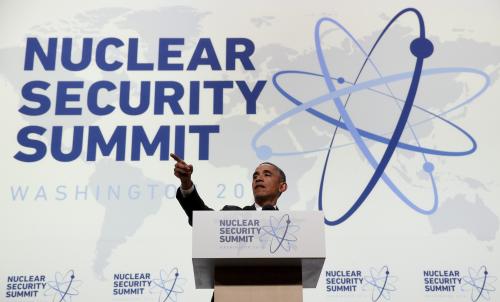At 8:30 AM on November 14th, technicians shut down Germany’s Stade nuclear power plant, beginning a process than will eventually eliminate nuclear power in Germany, and indeed, much of Europe. A few hours later in Washington, DC, U.S. lawmakers announced provisional agreement on a massive energy bill that includes a broad range of incentives designed to boost the nuclear industry. The contrast couldn’t have been sharper: Assuming no major changes in policy, Europe will be largely nuclear-free in 20 years, while America will be experiencing a nuclear renaissance. What’s more, there’s a good chance that neither will have things quite right.
U.S. lawmakers have been right not to be cowed by the environmentalist scare-mongering that has doomed the German nuclear industry. Such opposition has always been strange: Evaluated strictly on environmental grounds, nuclear energy beats every other mature energy technology—one of its best selling points is that it emits few airborne pollutants and no greenhouse gasses. On top of that, with robust government regulation in place, the likelihood of a major meltdown in a Western-designed nuclear reactor is negligible. To be sure, nuclear power is generally not cost-competitive with coal or natural gas. But when future global-warming-driven regulatory regimes charge polluters for their carbon emissions, that economic balance may change.
But just because nuclear power can do some good doesn’t mean that all nuclear technology is a godsend. Unfortunately, the energy bill’s authors seem to disagree: The bill they have written aims to boost dangerous nuclear technologies that, if commercialized, would leave America less secure.
The risky technologies center around a technique called reprocessing, which extracts plutonium from used, or “spent”, nuclear fuel. This technology figures prominently in nuclear weapons programs, but has long had a civilian application, in which the extracted plutonium is mixed with fresh uranium and reused to produce more nuclear power. Security analysts have always worried that states would pursue “civilian” reprocessing programs and then convert them to weapons-use with little notice.
For decades, the arguments for civilian reprocessing were threefold. First, proponents noted, nuclear reactors weren’t extracting all the energy contained in the uranium they used; by reprocessing rather than disposing of the spent fuel, they could avoid “wasting” resources. A related argument was that getting more energy out of every gram of uranium would create price savings that could be passed on to consumers. Lastly, nuclear engineers argued that by recycling rather than disposing of spent nuclear fuel, reprocessing would minimize the need for massive spent-fuel repositories like the one at Yucca Mountain, which are extremely contentious politically.
In time, though, each of these claims has proven to be shaky. Uranium has turned out to be plentiful, making resource conservation unnecessary. Its price has also plummeted, while the expense of reprocessing has risen—the cost of extracting extra energy from spent fuel is now widely agreed to be far higher than the cost of simply using more fresh uranium. And reprocessing does little to reduce the amount of space required to store spent fuel: Hot radioactive materials must be insulated using bulky material in order to prevent them from damaging nearby fuel, and the waste remaining after reprocessing still contains hot elements.
Proponents of the technology reply by pointing to commercial reprocessing programs in France, Britain, and Japan. But those programs were initiated by governments when our understanding of reprocessing was immature and future uranium prices were expected to be extremely high. The programs are not independently profitable, and would not exist without government subsidies. Today no advanced industrial nation, save perhaps the United States, appears to be interested in building a new reprocessing plant. (Japan is completing a plant, but only because it has already invested billions in it.)
Proponents also contend that new technology will allow reprocessing to be more proliferation-resistant. In a narrow sense, they’re right. New reprocessing technology would be less vulnerable to would-be-weaponeers than current reprocessing technology if it were designed to produce slightly contaminated plutonium—useful for power generation, but not for nuclear weapons. But it would still be far more dangerous than having no reprocessing at all, because the technology could be quickly modified to produce clean, weapons-useable, plutonium. To move from our current approach to new reprocessing technology on nonproliferation grounds would be like trading in a Ferrari for a Honda because the latter now has leather seats.
Of course at least two states—North Korea and Iran—are interested in reprocessing for more nefarious reasons. They exemplify the core problem with plutonium reprocessing: It offers excellent civilian cover for nuclear weapons development. Indeed, the Ford administration halted American reprocessing programs on the grounds that the United States could more effectively argue that states’ pursuit of reprocessing was illegitimate if it was not pursuing reprocessing itself.
Image a world where the United States actively developed plutonium reprocessing. Many states might conclude that, in the interest of their own economic development, they should pursue plutonium reprocessing as well. Only a few of those states would be using their programs to develop nuclear weapons, but how would the United States (and the rest of the world) know who they were until it was too late?
Now imagine a world where plutonium reprocessing has been recognized as uneconomical and is being phased out by the major industrial powers. States without nuclear weapons ambitions would likely look to the industrial powers and conclude that reprocessing is uneconomical and should not be pursued. It wouldn’t be a stretch from there to conclude that any state building new reprocessing facilities was pursuing nuclear weapons in violation of the Non-Proliferation Treaty, and should be dealt with accordingly. Such clarity would have forced the world confront North Korea 15 years ago, before it had extracted enough plutonium for one or two nuclear weapons. It would also clear away much of the confusion surrounding Iran’s nuclear program.
President Gerald Ford was a strong backer of nuclear power, just as the Bush administration is. But in announcing his policy on reprocessing 27 years ago, Ford concluded that “the reprocessing and recycling of plutonium should not proceed unless there is sound reason to conclude that the world community can effectively overcome the associated risks of proliferation.” As the news each day reminds us, we’ve got a long way to go.



Commentary
Op-edThe Wrong Way to Promote Nuclear Power
November 24, 2003